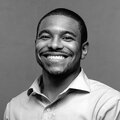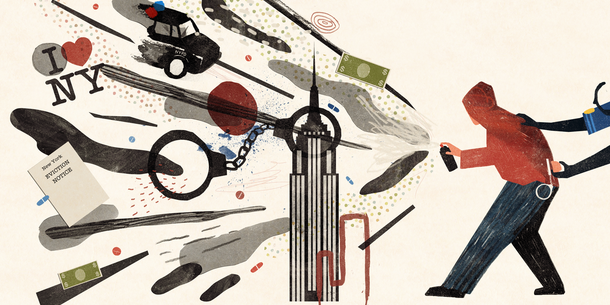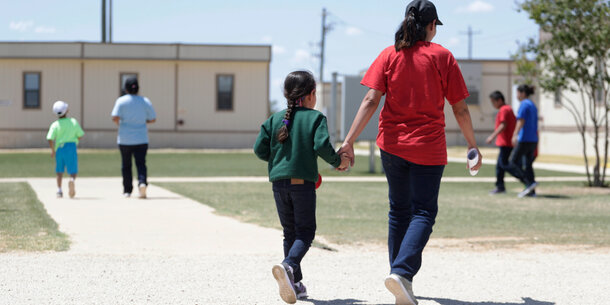I. The Scope of America’s Criminal Justice System
This analysis starts by estimating the number of people who have been affected by the criminal justice system in each
of three distinct ways: previous imprisonment, conviction of a felony that did not result in imprisonment, and
conviction of a misdemeanor. Each of these sanctions is highly likely to reduce earnings, making it important to
understand how widespread they are.
There are many other ways that people can encounter the criminal justice system. According to the FBI, more than 70
million people in the United States have a criminal record of some kind, meaning they have at least been arrested.
Millions of people cycle through
American jails annually. And tens of millions of people have a family member who has been involved in the criminal
justice system in some way.
All of these interactions may disrupt earnings and result in other long-lasting, serious harms. This report’s focus
on conviction and imprisonment should not be read as trivializing or ignoring the costs of these other types of
criminal justice involvement.
Previous analyses have studied the impact of incarceration on subsequent earnings but have examined the effect of
conviction only rarely. Few analyses have attempted to disaggregate the effect of conviction from the effect of
incarceration, or the impact of being convicted of a felony from that of a misdemeanor conviction. This report aims
to fill those research gaps.
>> The size of each of the three populations
studied in this report was derived from data on the number of people affected by each part of the
criminal justice system in a given year, reducing that figure to account for recidivism and
mortality, and then repeating the process for all subsequent years for which there is available
data.
>> For formerly imprisoned people, the model
starts with the following data points:
>> For each year, the model then matches
annual releases with that year’s corresponding mortality and recidivism estimates.
>> To visualize this process, start with a
representative year, 2005. In that year, 701,632 people were released from prison. The authors
estimated that, given 12 years to recidivate before 2017, 63 percent would return to prison. Of
the 37 percent of people who did not return to prison — 259,899 people — the authors estimated
that 90 percent have survived to the current day. As a result, of the people released from
prison in 2005 who did not return, an estimated 234,914 are alive today.
>> The results from each year were then
added together.
A. Formerly Imprisoned People
Estimate: 7.7 million
Since no government source tracks the number of formerly imprisoned people, the authors devised a model to
calculate an estimate. The authors started by entering (or interpolating, where necessary to bridge data gaps)
the number of people released from prison in each year in the study period. Next, these totals were adjusted for
recidivism rates to ensure that the model did not double count people who, according to the dataset, later
returned to prison. Last, the data was adjusted for mortality rates to remove the number of formerly imprisoned
people who likely have not survived to the present day. This process broadly conforms to the structure of
previous research but includes more recent data.
According to this process, an estimated 7.7 million people alive today — a little less than the population of
Virginia — have been to prison at some point in their lives.
Interestingly, more than 75 percent of these people were released in 2000 or later, meaning their prison terms
likely began in the late 1990s. Therefore,
while it may be tempting to attribute the size of the formerly imprisoned population to archaic policies that
have since been repealed, that does not appear to be entirely accurate.
This estimate is broadly consistent with prior research. Some smaller estimates cover just the working-age
population or are now out of date.
More recent research has estimated that in 2010 there were roughly 7.3 million currently or formerly imprisoned
people in the United States. Because this report’s estimate uses data from 1965 through 2017 — sufficient data on 2018 was not
yet available at the time of publication — a higher estimate is to be expected here. This report’s estimate
would be even higher but for the relatively high mortality estimates used here.
As shown in table 2, men vastly outnumber women among the formerly imprisoned population. Black and Latino people
also make up a majority of the formerly imprisoned population, with formerly imprisoned Black men and women
outnumbering their white peers.
As depicted in figure 1, that is wildly out of proportion with the general population. But the disproportionate
representation of Black and Latino people in the formerly imprisoned population should not be surprising, given
the well-documented, continued existence of racial disparities in prison populations.
Indeed, according to the most recently available data, the number of Black men and women behind bars continues
to exceed the number of imprisoned white men and women.
It would be surprising if these persistent disparities were not reflected in the formerly imprisoned
population.
B. People with a Felony Conviction Not Sentenced to Imprisonment
Estimate: 12.1 million
While imprisonment is a serious sanction, formerly imprisoned people represent just a small slice of the
justice-involved population. Those who have been to prison or are currently imprisoned — around 10 million
people in total — compose just 15 percent of the estimated 70 million Americans with a criminal record of some
kind.
Felony convictions are on their own a serious sanction likely to impact earning potential. Understanding their
prevalence and effect is vital to developing a full picture of the economic impact of the criminal justice
system. However, isolating the number of people with felony records who have not been sentenced to imprisonment
is difficult, as many people convicted of felonies do spend time in prison.
Most people convicted of felonies are sentenced to prison, probation (a form of supervised release generally
imposed as an alternative to incarceration), or a split sentence combining the two. To estimate the number of people who
have been convicted of a felony but not sentenced to prison, then, this report starts with data on the annual
number of people entering probation every year.
As in the last section, this data was then adjusted to account for recidivism and mortality. Recidivism data was
drawn from reports on people put on probation in the federal system.
For mortality estimates, the authors assumed that people convicted of felonies but not sentenced to prison face
mortality risks higher than the general population’s but lower than the formerly imprisoned population’s. The
authors also added other variables to ensure, to the extent possible, that the model captured only people who
were sentenced to probation without having also been imprisoned. The total number of probationers was then
reduced by half because, according to BJS data, half of people sentenced to probation receive that sentence for
a misdemeanor conviction.
Repeating this process for each year’s cohort of people entering probation, the authors estimate that
approximately 12.1 million people alive today have been convicted of a felony offense without being imprisoned
for it. Unfortunately, BJS does not track the racial breakdown of people entering or exiting probation.
As a result, it is not possible to estimate the demographic makeup of this population.
There is a risk that this figure is an overestimate, since it may include some people who have spent time in
prison. For example, someone who entered prison for a separate offense after probation was terminated
would be counted in both groups. The patchwork nature of criminal justice data makes it impossible to fully
eliminate such a risk.
However, two additional limitations suggest that this model might produce an underestimate. First, the
data necessary for this method goes back only as far as 1980, so this model covers a shorter period than the
model for the formerly imprisoned population. Second, many people convicted of felonies are sentenced to
incarceration in local jails, a population that neither this model nor the previous section’s analysis captures.
As a rough estimate, though, this method helps develop a broader understanding of the
justice-involved population.
C. People with a Misdemeanor Conviction
Estimate: 45 million
Though less severe than felonies, misdemeanors also have a long-term impact on earning potential. Convictions for
these generally lower-level crimes may show up on background checks, disqualify someone from holding a
professional license, or come with other burdensome conditions. Any estimate of the prevalence of a criminal
conviction and its effects must reckon with the sprawling misdemeanor justice system.
Most Americans are familiar from popular culture with the classic model of the criminal case: refereed by a
judge, the prosecutor and defense attorney present evidence and examine and cross-examine witnesses, with guilt
or innocence decided by an impartial jury. But this model describes only a vanishingly small percentage of
cases.
It fails to capture the reality of the misdemeanor system. People accused of such crimes face a streamlined and,
in many cases, stripped-down form of justice.
While this field of study is an evolving one, researchers have documented more than 13 million annual misdemeanor
cases in recent years. However, estimating the
number of people with a misdemeanor conviction is a difficult task. Conviction rates and even the
meaning of a misdemeanor conviction vary from state to state. Some lower-level offenses will qualify as a
misdemeanor in some states but not in others.
To estimate annual misdemeanor convictions, then, this report employs a novel method that starts with FBI arrest
data and then calculates how many of those arrests ended in conviction, using conviction rates estimated from a
longitudinal survey.
Next, to avoid double counting people, the authors sought to estimate misdemeanor recidivism. But recidivism
poses its own challenge: unlike felony sentences and prison terms, people routinely receive multiple misdemeanor
convictions within a single year. To
solve this problem, repeat jail admissions were used as a proxy for intra-year misdemeanor recidivism.
That figure — suggesting that the average person admitted to a major-city jail is admitted roughly 1.4 times per
year — was then used to estimate how many unique people were convicted of a misdemeanor in a given year. As in
the preceding sections, estimated inter-year recidivism and mortality rates were then applied. Following this
method, the authors estimate that nearly 46.8 million currently living people — one in seven Americans — have a
misdemeanor conviction and, therefore, a nontrivial criminal record.
This estimate comes with some limitations. For one thing, it likely includes people already counted in previous
sections. That is, some of the 46.8 million people identified using this model may have also spent time in
prison, or been convicted of a felony, before or after incurring their misdemeanor conviction. This double
counting risk is unavoidable. This model’s recidivism metrics theoretically guard against double counting people
who have been convicted of two misdemeanors but cannot, given the limits of existing data, eliminate
people who have recidivated in other ways. Furthermore, the authors were able to obtain enough data to run this
model over only 23 years, from 1995 through 2017. Rates of actual intra-year recidivism may also be higher than
indicated by the limited research that was available to build this model.
These limitations cannot be overcome given the significant gaps in data on the criminal justice system. Extensive
original research, including large-scale data collection, would be necessary to develop a more precise
understanding of the number of people who have been convicted of a misdemeanor. Given these limitations, it
might be better to understand the total offered in this report as a rough estimate, rather than a precise one:
around 45 million people, rather than precisely 46.8 million people, have been convicted of a
misdemeanor.
>> One significant group goes uncounted in
this analysis: people who have been detained or incarcerated in a jail. Because jails process
more than 10 million admissions annually, the number of people who have been to jail at some
point must be vast.
>> It is difficult to estimate the size of
this population, however. Part of the problem is that jails serve two purposes: they detain
people for short periods as they wait for trial, and they incarcerate people who have already
been convicted of a crime — typically a low-level one. Generally, though, jail recidivism data
tracks only the latter group.
Without a solid understanding of the rate at which people return to jail for any reason, a
reasonable estimate of the formerly jailed population is impossible. This is especially true
given that 54 percent of the jail population turns over every week, magnifying the impact of any
error in estimating recidivism.
>> The length of a jail stay also varies
sharply. While the average jail stay is just 26 days, it is longer in larger jurisdictions such
as New York City.
And years-long jail stays are well documented.
As a result, it is difficult to say that everyone who spends time in jail is affected in a
similar way. Earnings loss and even job loss are certainly common experiences.
But longer-term effects and how they are distributed are more complicated questions.
>> Research conducted for this report did
allow the authors to conclude, on the basis of one important case, that the number of people
affected by jails is very large indeed. Before the coronavirus pandemic, the New York City
Department of Correction — which oversees the Rikers Island jail complex — held an average daily
population of around 8,000 people and admitted around 40,000 annually, down from more than
120,000 in fiscal year (FY) 2001.
That means it held roughly 1 percent of the average daily population of all the jails
in America.
>> According to data obtained through a
Freedom of Information Law request, New York City’s Department of Correction admitted 949,919
individuals into custody between 1983 and June 14, 2019. (A forthcoming study by a
team of sociologists will explore the lifetime risk of jail incarceration for New Yorkers of
different demographic groups.) If New York City alone jailed nearly 1 million unique people over
a 36-year period, then the number of people who have ever been incarcerated in any jail must run
into the tens of millions.
That said, none of these caveats undercut this central finding: a surprisingly large number of Americans have a
misdemeanor conviction, with (as this report will show) serious consequences. Even if the misdemeanor population
were half as high as is estimated here — in the 20 million range, for example, due to a higher than expected
rate of intra-year recidivism — the total would remain shocking, and the policy implications would be unchanged.
Research on the misdemeanor system is in its earliest phases. Hopefully, this estimate will lead people to
undertake the data collection efforts needed to support further research and will be refined in future studies.
This analysis offers a way of understanding the scale of mass incarceration in the United States that is more
detailed than past research. Of the more than 70 million people with a criminal record today, tens of millions
have experienced some of the most severe sanctions known to the criminal justice system — imprisonment or
conviction of a felony. And tens of millions more must contend with the stigma of a misdemeanor conviction,
which, while less severe, still harms one’s ability to find a stable job.
>> America’s sprawling criminal justice
system can affect someone’s life, directly or indirectly, in any number of ways. This report
focuses on misdemeanor convictions, felony convictions, and imprisonment, presuming that these
interactions are likely to affect someone’s long-term earnings. Why, though, do conviction and
imprisonment affect earnings? And why does imprisonment have a particularly strong effect?
Researchers have suggested the following theories, among others:
- Stigma. A criminal record may deter employers from
making a job offer or even conducting an interview. According to one 2018 survey, 95 percent
of employers conduct some form of background check on job candidates.
Perhaps as a result, applicants with a criminal record are around 50 percent less likely to
receive a callback interview, depriving them of even the chance to explain their history.
Some research suggests that the type of criminal conviction determines the severity of the
stigma.
Even so, conviction or incarceration no matter the cause may contribute to extended periods
of joblessness, resulting in a high unemployment rate among the justice-involved population
(estimated at 27 percent for formerly imprisoned people).
They may also lead people to accept jobs that pay less or offer fewer advancement
opportunities than positions they might have otherwise found.
- Legal barriers to work. As explored in more detail
below, some jobs require occupational licenses, and thousands of rules limit access to
licenses for people with a criminal record.
These rules may prevent formerly justice-involved people from securing work in lucrative
fields and in fields where they have expertise. For example, California trains imprisoned
people to be elite firefighters, but legal restrictions bar many from joining that
profession upon release.
- Missed opportunities. The preceding two factors
describe challenges faced by anyone with a criminal record. But people returning from prison
or prolonged jail incarceration encounter additional hurdles. For one, time spent
incarcerated means time out of the workforce and time not spent accumulating the skills or
social connections needed to find or succeed in a job (what economists call “human
capital”). And those effects stack over time: according to one analysis, each
additional year of imprisonment reduces by nearly 4 percentage points the likelihood that a
person will find post-release employment.
While research in this field tends to focus on the effects of prison, one new study suggests
that jails may have similarly damaging effects.
- Mental and physical health. Incarceration
jeopardizes health and well-being.
People who need health care while in prison, for example, may not receive high-quality
treatment or any treatment at all.
Health conditions and problems often persist after release, making it that much harder to
find and keep a stable job.
The dehumanizing experience of prison itself, and the behaviors people must adopt to
survive, may also make it difficult to succeed in the workforce.






